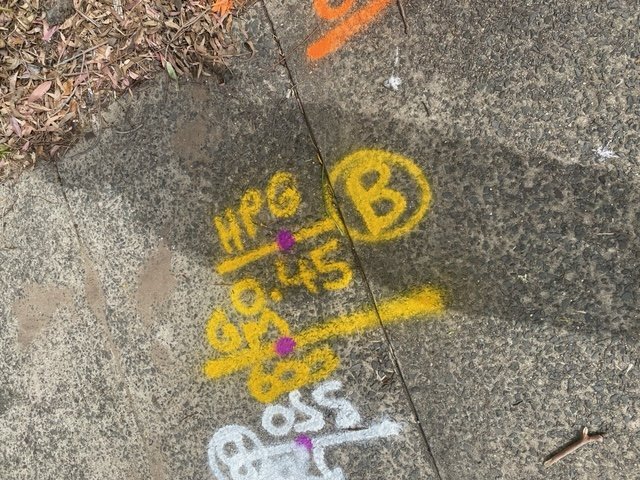Subsurface utility locating: Why it pays to invest in higher accuracy
Escalating costs, unnecessary delays, damage to expensive equipment… these are just some of the consequences of a basic, run-of-the-mill locating service for your site works. And that’s just the tip of the iceberg.
If you don’t have thorough locating documentation prior to the excavation of your site, you run the risk of damaging existing underground services that may be undetected or in the wrong position on plans. This can create network disruptions and outages and could land you in hot water with penalties imposed. Not to mention the risk of a rupture or strike to a natural gas pipe or high voltage electricity cable which could cause damage to structures, serious injury to your crew…or worse.
Many subsurface utilities locating companies will offer basic locating works which are cost-effective, but are superficial in their approach, and this may mean their clients take on more risk than is necessary. Alternatively, a thorough locating service will employ a range of locating techniques to increase the accuracy.
The first step should be a rigorous visual locating process. According to Durkin’s Managing Director, Sean Durkin, ”if you can put your eyes on it, it’s real. So the visual locating is the most important step as it delivers 100% accuracy, however it is often skipped”. The Durkin team puts a lot of time and effort into training crews on what to look for to visually locate signs of subsurface utilities as, “the more clues observed above ground, the higher the confidence we can have about what is below,” said Sean.
Once the complete survey of the above-ground signs of subsurface utilities is complete, Durkin initiates a range of combined subsurface utility location technologies. “We initially put a lot of effort into understanding the ground conditions in order to determine the best location method,”said Sean. “Then based on the assessment we will employ a range of techniques”. These techniques will include:
Electromagnetic locating methods which provide accurate locating of metallic pipes and cables and pipes/conduits which can be accessed via a pit. It should be noted however that not all metallic pipes and cables can be located to high accuracy levels, e.g cast iron sewers, pipes with non conductive flanged joints etc.
Ground Penetrating Radar methods which provide a detection capability of approximately 50% accuracy (higher in sandy soils, lower in clay soils) in locating non metallic pipes and cables. It is particularly valuable for locating Nylon or PE Gas mains and services laid without trace wire.
Potholing which is also very important to combine with other technologies and provides a detection capability of 100% ie it exposes the pipe/sable and it can be “seen”
Gas Tracker - a unique technology from France used to locate gas utilities which are particularly difficult to locate and have few surface features. Once the gas supply is disconnected at the meter, the gas tracker sends a pulse down the pipe to enable the pipe to be located in conjunction with GPR. In most conditions this gets locate accuracy of gas services up from an average of 50% to approximately 90%. This then reduces the size and cost of potholes needed.
A 2 man crew as opposed to the standard one-man crew to increase accuracy of locating as it allows more techniques to be used including induction grid scans.
Durkin’s modeling (pictured below) shows a cost vs. accuracy analysis for an initial subsurface utility location project to help clients determine the level of investment they need to make in their utility locating process
Durkin’s own internal rating system to advise clients of less accurate locates and give more info than the standard offering as per AS 5488..
An example of a great outcome from the employment of combined techniques was Durkin’s locating work on the WestConnex 3B Tunnel project, where thorough planning, electronic technologies and potholing uncovered over 2,000 services that were previously undetected or documented. This had a major impact on de-risking the project and enabled over 100 deep boreholes to be drilled without a service strike.
“We protected our client on this project and allowed them to deliver their work safely, on budget, on time and with no surprises,” said Sean Durkin. “In the case of this type of project, if any services are struck with equipment, they need to stop work straight away. The incident is then escalated and investigated, and this can shut down the project for weeks. That’s not something you want on a project of this magnitude.”
Sean outlined that Durkin always recommends clients put time and investment into the planning stages of a project upfront to avoid extra costs and safety issues once site excavation takes place. “It may cost a small amount more to add thorough locating methods to your project scope in the beginning but it can help reduce potential future costs of reworks or shift cancelation due to utility strikes.”
When it comes to road, building, rail, airport and other such infrastructure projects, absolute certainty about the location of subsurface utilities doesn’t exist - it’s never possible to 100% de-risk a site. As such it’s important for Project Managers to ask themselves the questions: What’s the risk vs. the budget limitations? Is it worth risking your crew’s safety, the company’s reputation, the project timeline and budget to save a few dollars on your locating costs
To conduct the safe and efficient excavation of your site, Durkin recommends engaging a locating service that will employ multiple locating techniques to increase the accuracy of your results.
If you want advice on how Durkin’s combination of methods can help to de-risk your next project, contact us.







